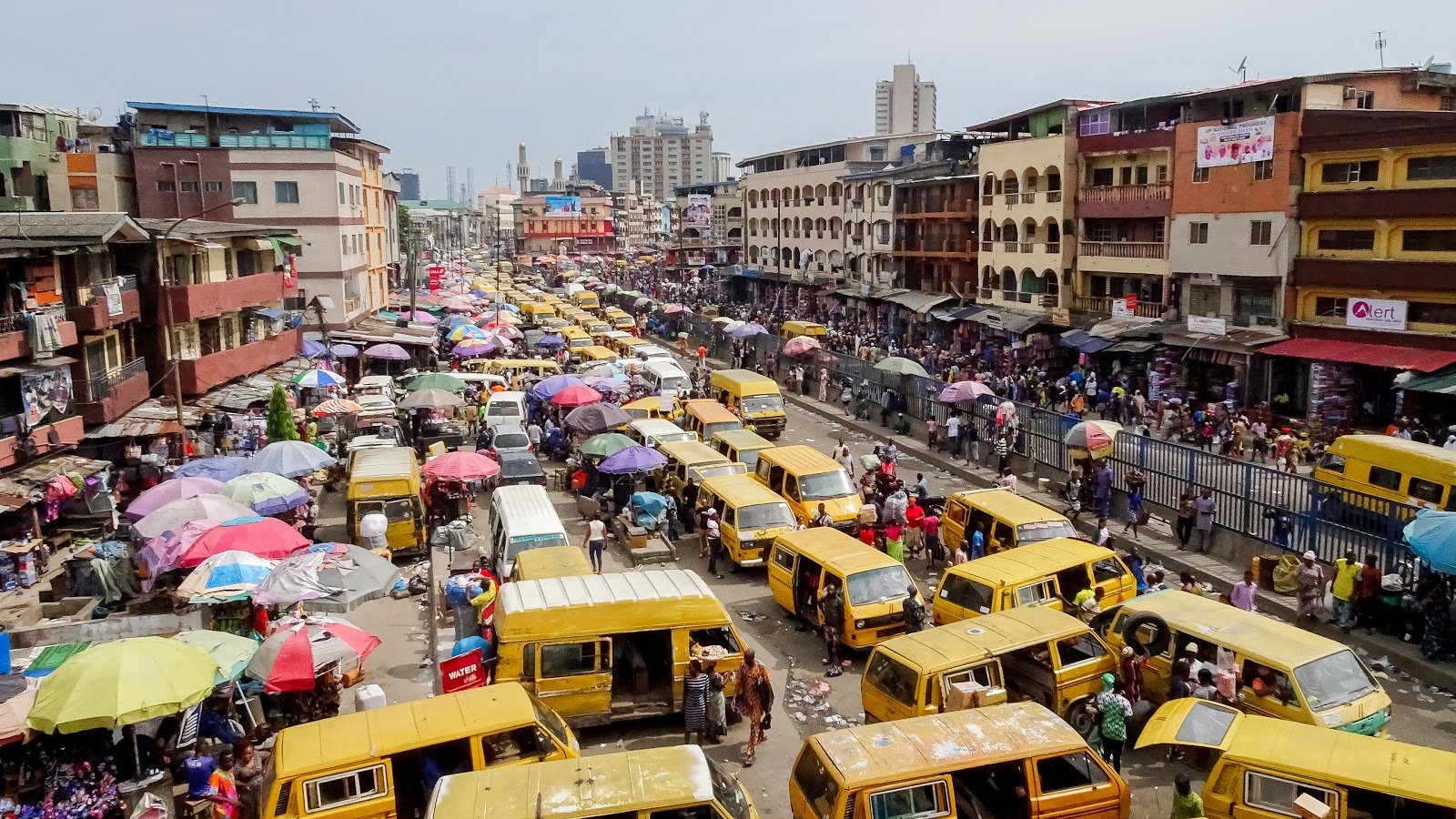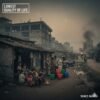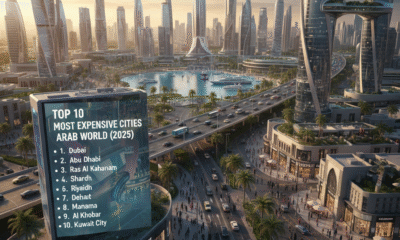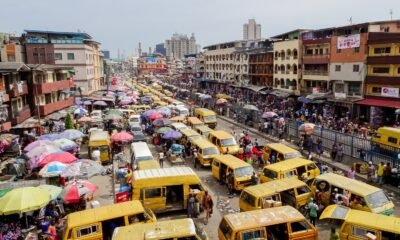Lifestyle
Top 10 Cities with the Worst Quality of Life
The 2024 mid-year report by Numbeo ranks cities around the world based on their quality of life. The report highlights significant challenges facing major urban centers across the globe.
These cities struggle to offer a high quality of life to their residents.
- Top 10 Fast Payout Online Casinos for Canadians in 2025
- Top 10 hardest countries to obtain citizenship
The low rankings for these cities are due to many combined factors. High pollution levels and weak healthcare systems pose major risks. Residents also face low safety, long daily commutes, and weak purchasing power.
Similarly, the high living costs and unaffordable housing further strain households. Furthermore, some of these cities must deal with challenging and harsh climates.
This ranking confirms that rapid growth and poor infrastructure deeply impact daily living for millions of people and it helps to show where urban development must focus more on sustainability and resident well-being.
1. Lagos, Nigeria
Lagos holds the first spot on this list. It is the largest city and chief port of modern Nigeria. The city started as a coastal village called Eko settled by the Yoruba people in the 14th century. Portuguese traders later used it as a major hub for the slave trade, renaming it Lagos. In 1861, it became a British colony, which spurred commercial growth.
The city’s development accelerated massively after Nigeria gained independence in 1960. People flocked to Lagos seeking work and education, causing the population to balloon. This sudden growth happened much faster than the supporting infrastructure could expand. This lack of planning caused severe problems.
Today, Lagos residents deal with the lowest quality of life factors. Overcrowding, extensive pollution, and congested traffic are daily issues. The city faces significant challenges in providing sufficient healthcare and ensuring high safety standards for its vast population.
2. Tehran, Iran
Tehran ranks second on the list of cities with the worst quality of life. The city was initially a small village. It was located north of the city of Rayy, which was once a capital of the Seljuq empire. Tehran began its rapid growth when it became the capital of Iran in the late 18th century.
The city saw significant expansion during the 19th and 20th centuries. The development included new infrastructure and roads, transforming it into a modern capital. Today, Tehran is the most populous city in Western Asia. Its location at the foot of the Alborz Mountains shapes its environment and geography.
Residents of Tehran face poor air quality due to high pollution. They also grapple with major issues in affordable housing and high living costs. These factors, combined with challenges in healthcare access, contribute to its low quality of life score.
3. Manila, Philippines
Manila holds the third position. Its history dates back to the year 900 AD. The city was originally a fortified settlement and a trading quarter near the mouth of the Pasig River. Spain took control in 1565 and established it as the center of their colonial government in the Philippines.
Under Spanish rule, Manila became a crucial trade hub between Asia and the Americas. The city was largely destroyed during the Battle of Manila in 1945 during World War II. Manila was rebuilt after the war. The Metropolitan Manila region became an independent entity in 1975.
Manila struggles with poor quality of life due to high pollution and dense urban crowding. Long commutes are a major daily problem for workers across the metropolitan area. The city’s issues with safety and poor healthcare further lower its score in the rankings.
4. Dhaka, Bangladesh
Dhaka ranks fourth for having a low quality of life. The area has a long history of human settlement. Dhaka developed into a major urban center in the 17th century. It served as the provincial capital and a commercial hub of the powerful Mughal Empire.
The city gained importance again during the British Raj period. It became a center for administration and education. Following the partition of India, Dhaka was made the capital of East Bengal. It later became the capital of independent Bangladesh in 1971.
Dhaka is one of the world’s most densely populated cities. This massive population places enormous strain on all city services. High pollution, low safety, and poor-quality housing contribute to the city’s low ranking. Residents face very difficult daily living conditions.
5. Colombo, Sri Lanka
Colombo takes the fifth position on this challenging list. It began as an Indian Ocean port settlement. It attracted Muslim traders early in its history. The city came under a succession of European empires, including the Portuguese, Dutch, and finally the British.
The British made Colombo the capital of the island in 1815. It kept this capital status after Sri Lanka gained independence in 1948. The city’s development centered on its harbor, which was artificially engineered to be a major trans-shipment port. This history makes it a highly cosmopolitan place.
Colombo residents report low scores for healthcare and purchasing power. The cost of living is high relative to what people earn. Like many other major port cities, it must manage high levels of pollution and persistent challenges with affordable housing.
6. Rio de Janeiro, Brazil
Rio de Janeiro ranks sixth on the list. The Portuguese founded the city in 1565. It first served as a seat for the Portuguese Empire. In 1763, it became the capital of the State of Brazil. It also served as the capital for the entire Kingdom of Brazil from 1808.
Rio remained the capital of Brazil until 1960, when the government moved to the new city of Brasília. This long period as a capital created a large, complex metropolis. Its natural beauty is world-famous, but its urban structure is deeply complex and unevenly developed.
The city struggles with low safety ratings and high rates of violent crime. Residents also experience significant problems with high pollution and long commutes. Poor infrastructure planning and social inequality contribute heavily to the low quality of life score.
7. Ho Chi Minh City, Vietnam
Ho Chi Minh City, formerly known as Saigon, is ranked seventh. The area started as a Cambodian fishing village called Prey Nokor. It came under the control of the Vietnamese in 1698. The French later made it the capital of French Cochinchina.
The city was the capital of South Vietnam until 1975. The fall of Saigon led to Vietnam’s reunification. It was then renamed to honor the late leader Ho Chi Minh. Since the 1990s, the city has undergone rapid modernization and become Vietnam’s major economic hub.
Ho Chi Minh City residents face major issues with pollution and congested, long commutes. The fast pace of economic growth means infrastructure has often lagged. Citizens also note low safety ratings, which decreases the overall quality of life.
8. Beirut, Lebanon
Beirut is eighth on this list. It is one of the oldest cities in the world, continuously inhabited for over 5,000 years. The city began as a Phoenician port and later flourished under Roman rule. It became an important center for trade and learning.
Beirut has suffered greatly from conflict, including the devastating Lebanese Civil War from 1975 to 1990. The city was rebuilt but still faces instability. A massive port explosion in 2020 caused huge damage and a severe economic crisis.
The current economic and political situation deeply affects the quality of life. Residents struggle with weak purchasing power and high living costs. Poor healthcare and concerns over safety are also major reasons for the city’s low ranking.
9. Cairo, Egypt
Cairo ranks ninth among cities with the worst quality of life. Its origins date back to settlements from the first millennium AD. The modern city was founded by the Fatimid dynasty in 969. It superseded earlier settlements like Fustat. Cairo became an important center for Islamic learning and trade.
The city has been a major capital under different rulers for centuries. Under Muhammad Ali Pasha in the 19th century, Cairo saw modernization with new boulevards. It grew rapidly in the 20th century, becoming the largest city in the Islamic world and one of Africa’s biggest.
Cairo residents deal with extreme levels of high pollution, especially poor air quality. They also face a highly congested urban environment which leads to long commutes. The rapid population growth continues to challenge the city’s ability to maintain a good quality of essential services.
10. Kathmandu, Nepal
Kathmandu rounds out the top ten. It is one of the oldest continuously inhabited places in the world. The city’s history goes back to the 2nd century AD. It was historically the center of the Nepal Mandala, a cultural and political hub for the Newar people in the Himalayas.
The city’s strategic location on the ancient trade routes between India and Tibet helped its development. Kings later founded the city in its current shape, creating a secure point for trade. It became the capital of the unified kingdom of Nepal in the 18th century.
The city struggles with severe high pollution and low safety ratings. Residents report issues with weak purchasing power and high living costs relative to income. These factors show the pressure that rapid urbanization puts on an ancient city located in a challenging environment.




















